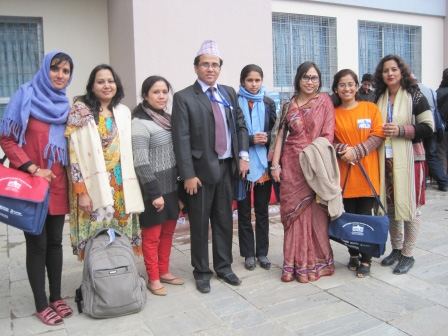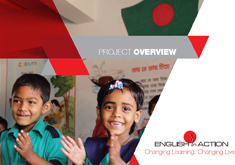A small team of English in Action (EIA) staff attended the recent 18th International Conference of the Nepal English Language Teachers Association (NELTA) in February.
During the conference, the team gave presentations to English language teaching (ELT) professionals on the EIA approach and materials. The conference was held in Kathmandu at the D.A.V. School at Lalitpur and focused on the theme: ‘Transformations in ELT: Contexts, Agents and Opportunities’.
At the conference, the EIA team attended plenary sessions, presented EIA’s ideas, practices and techniques, and attended the presentations of other ELT professionals. They also networked with international ELT professionals, shared experiences and received feedback on their ideas. The plenary sessions were conducted by esteemed ELT specialists such as Dr. Richard Smith, University of Warwick (UK), and Dr. JoAnn Crandall, Professor Emerita, University of Maryland (USA).
EIA team members at the conference included staff from BMB Mott MacDonald and BBC Media Action. Senior Core Trainer Sudeb Kumar Biswas and Core Trainer Rehnuma Akhter jointly presented a paper titled: “Influence of Reflective Practices on Teachers’ Teaching Learning Processes”, which focused EIA teachers’ reflective practice at the beginning of the intervention. Core Trainer Shahanaj Parvin presented a workshop on ‘Grammar Spotlight: A new dimension to teaching grammar’, which showed EIA’s approach to grammar through a series of fun language activities and sharing experiences.
Further to this, Materials Development Officer, Ahmed Orko, spoke of the intricacies of audio material development, highlighting the issue of adapting materials for different contexts through his presentation, “Audio Production for ELT in Bangladesh - Contextualization: Challenges and Practices”. Rebeka Badiozzaman, Asst. ELT Materials Developer for BBC Media Action, presented two papers based on her personal research interest in learner autonomy, titled ‘Learner Autonomy and ICT Tools in Under-resourced Rural Areas’ and ‘Technology and Media in the Classroom to Trigger Learner Autonomy’.






